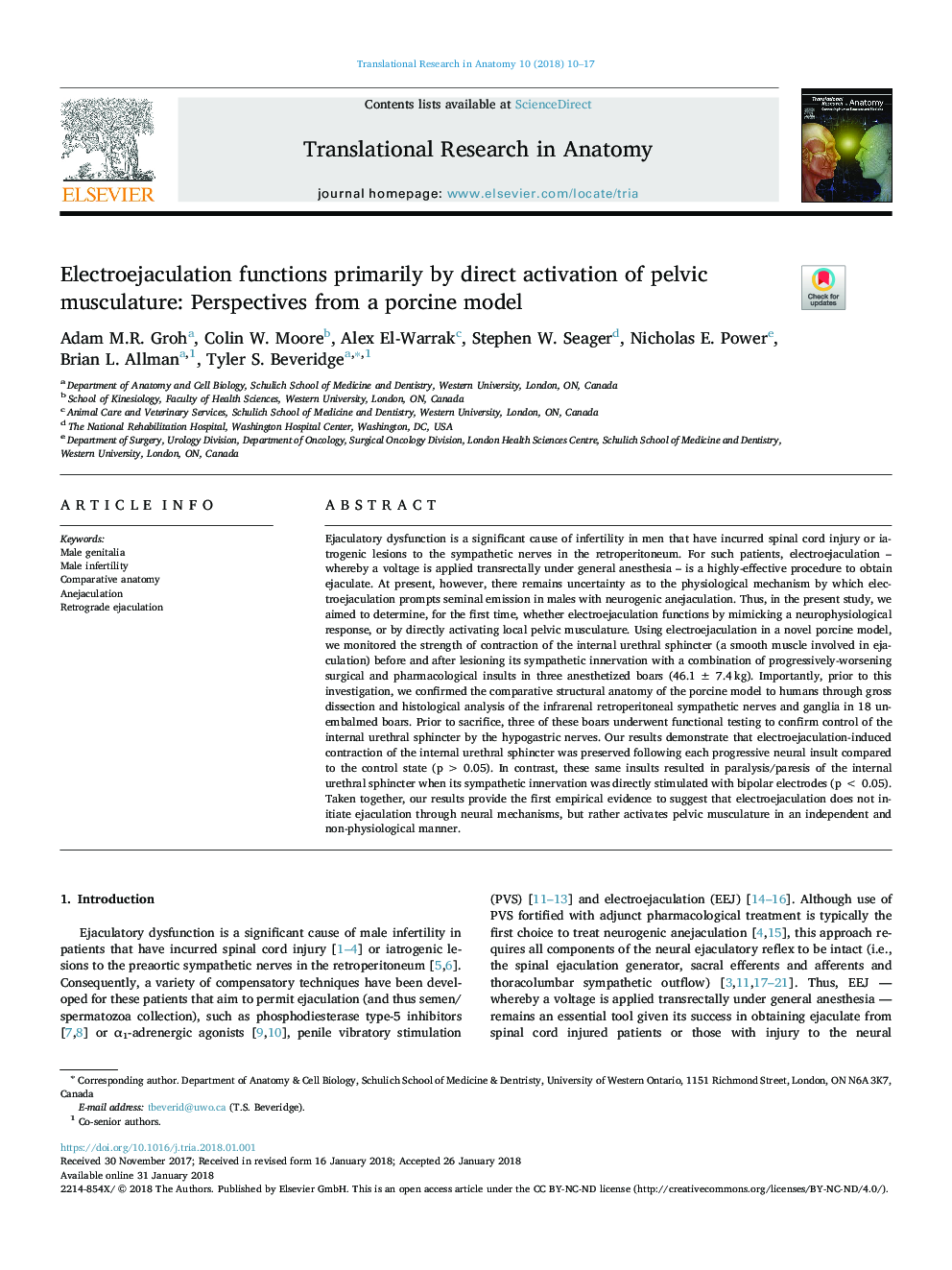| Article ID | Journal | Published Year | Pages | File Type |
|---|---|---|---|---|
| 8724510 | Translational Research in Anatomy | 2018 | 8 Pages |
Abstract
Ejaculatory dysfunction is a significant cause of infertility in men that have incurred spinal cord injury or iatrogenic lesions to the sympathetic nerves in the retroperitoneum. For such patients, electroejaculation - whereby a voltage is applied transrectally under general anesthesia - is a highly-effective procedure to obtain ejaculate. At present, however, there remains uncertainty as to the physiological mechanism by which electroejaculation prompts seminal emission in males with neurogenic anejaculation. Thus, in the present study, we aimed to determine, for the first time, whether electroejaculation functions by mimicking a neurophysiological response, or by directly activating local pelvic musculature. Using electroejaculation in a novel porcine model, we monitored the strength of contraction of the internal urethral sphincter (a smooth muscle involved in ejaculation) before and after lesioning its sympathetic innervation with a combination of progressively-worsening surgical and pharmacological insults in three anesthetized boars (46.1â¯Â±â¯7.4â¯kg). Importantly, prior to this investigation, we confirmed the comparative structural anatomy of the porcine model to humans through gross dissection and histological analysis of the infrarenal retroperitoneal sympathetic nerves and ganglia in 18 unembalmed boars. Prior to sacrifice, three of these boars underwent functional testing to confirm control of the internal urethral sphincter by the hypogastric nerves. Our results demonstrate that electroejaculation-induced contraction of the internal urethral sphincter was preserved following each progressive neural insult compared to the control state (pâ¯>â¯0.05). In contrast, these same insults resulted in paralysis/paresis of the internal urethral sphincter when its sympathetic innervation was directly stimulated with bipolar electrodes (pâ¯<â¯0.05). Taken together, our results provide the first empirical evidence to suggest that electroejaculation does not initiate ejaculation through neural mechanisms, but rather activates pelvic musculature in an independent and non-physiological manner.
Related Topics
Life Sciences
Neuroscience
Neuroscience (General)
Authors
Adam M.R. Groh, Colin W. Moore, Alex El-Warrak, Stephen W. Seager, Nicholas E. Power, Brian L. Allman, Tyler S. Beveridge,
